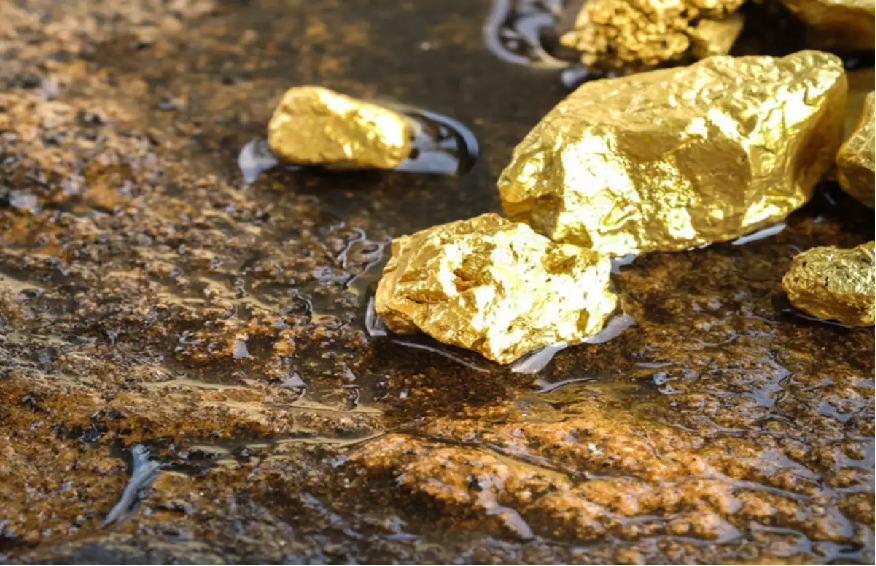Gold is considered one of the densest of all the metals that have huge cultural value. It has been a symbol of wealth, either in the form of precious jewelry, coins, or artifacts. Saying that gold is heavenly for us will be no mistake. It is one of the most valuable natural minerals for humans on this planet. Not only in jewelry, but it is also utilized for finance, electronics, computers, medicine, and many other things.
Occurrence of Gold
Gold is a widespread metal that occurs in low concentrations in mineral rocks. It is an attractive shimmering mineral that occurs deep in the layers of earth from where it is shifted by natural sources like water and molten and natural phenomena involving volcanic eruptions and earthquakes. A significant amount of gold is obtained from mainly three types of deposits: hydrothermal quartz and associated deposits in igneous and metamorphic rocks, volcanic exhalative sulfide deposits, and consolidated to unconsolidated placer deposits. Less commonly, it can also be found in metamorphic or hydrothermal deposits or epithermal deposits like volcanic fumaroles. Talking about its abundance, the metal is estimated at around 0.05ppm in the earth’s crust. It occurs in free elemental (native) form as nuggets and grains, in rocks, veins, and alluvial deposits as well. There are very few circumstances in which gold can also be found as gold compounds, often with tellurium (gold telluride).
Properties of Gold
You will see that gold has been a popular choice for rewarding. The academic award, Olympics, or Nobel Prize receive golden rewards which raise their recognition and value. The usefulness of gold for the making of ornamental objects and fine jewelry is irreplaceable. Undeniably, no other metal has been held in higher esteem throughout the past hundreds of years. This metal has numerous qualities or properties, which makes it a preferable choice for industrial, medical, and technological aspects. The properties of gold are listed as follows:
Conductive – Gold has considerable thermal and electrical conductivity. Even gold does not tarnish, due to which it is considered useful for electronic purposes. It has an electrical resistivity of 0.022 micro-ohms at 20°C.
Malleableand Ductile – Gold can be easily beaten into sheets and drawn into wires. Considering 1g of gold (equivalent to the size of rice) can be transformed into thin film covering 1sq meters. It is stretchable and unbreakable under tension.
Corrosion Resistant – Gold is one of the least reactive metals in the periodic table. It remains unaffected by air, water, alkalis, and acids except for the aqua region (mixture of nitric acid and hydrochloric acid). It never rusts or corrodes.
High Boiling and Melting Point – The metal melts at a very high temperature which is incredibly 1,948°F. Gold boils at 5,173°F.
You will find numerous companies like Newmont which are integrated into the exploration and development of high-quality ore deposits. Considering Trillium Gold, it is a gold exploration company with skilled management and decades of experience in the mining industry. Currently, Trillium Gold Mines are effectively providing mining services and serving clients in Canada.
Conclusion
Gold’s beauty and value are unique among other metals. Most of the gold that was produced was utilized to make jewelry. Other industries, including electric and healthcare, consume only 12% of gold. This attractive natural element has huge importance for financial transactions as well.

